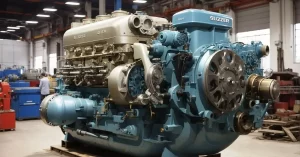Table of Contents
Top Marine Engine Manufacturers
Hey there, fellow sea enthusiasts! Today, we’re diving deep into the world of marine engines – those colossal powerhouses that make ships glide through the waves like they own the ocean.
Imagine this: you’re on a massive cargo ship or a sleek yacht, and you want it to move faster than a speeding fish while sipping fuel like a seasoned sailor enjoying a cup of coffee. That’s where marine engines come into play. They’re the heart and soul of any vessel, responsible for propelling it forward and ensuring you get from point A to B smoothly and efficiently.
But here’s the kicker: crafting these maritime marvels isn’t child’s play. Creating these mechanical behemoths takes a boatload (pun intended) of engineering prowess and a treasure chest of resources. After all, they need to stand up to the unforgiving forces of the open sea.
The tale has a new twist, as if more of a challenge was needed. Environmental regulations have become as strict as a drill sergeant during boot camp. The pressure is on for manufacturers to make these engines powerful and eco-friendly. That means they have to clean up their emissions act while keeping costs in check – a Herculean task, you might say.
Now, let’s talk about the real stars of the show, the top marine engine manufacturers. These are the folks leading the charge when crafting the most reliable and efficient engines for your sea adventures. We’re talking about names like SULZER, MAN, Hyundai, and B&W – the big guns in the industry. When these engines rev up, you know you’re in for a smooth sailing experience.
So, buckle up (or put a life jacket on) as we take a closer look at these marine powerhouses and explore the engines that have powered ships across oceans for generations. Ready to embark on this sea journey? Let’s set sail! ⚓🌊
Sulzer Engines
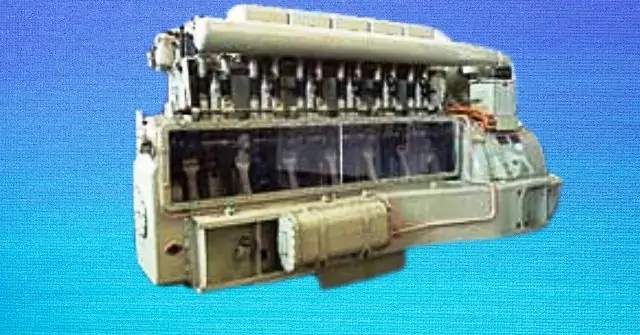


Alright, folks, let’s dive into the engine series from SULZER, the wizards of marine machinery. I’ll break it down for you, starting with the vintage but rare RD series.
SULZER RD Series:
This one’s like the grandpa of marine engines. It’s been around the block and then some. You don’t see it much in today’s shipping world because it’s ancient by maritime standards. RD engines sport rotary exhaust valves and fuel valves with short spindles. The cylinder liner quills are a wet type and only up top. It’s got a pulse turbocharging system, but here’s the kicker – no auxiliary blower for that extra oomph in scavenge pressure. Think of it like using an old flip phone in the era of smartphones – it still works, but it’s not exactly cutting-edge.
SULZER RND Series:
Now, we’re talking about a legend in the making. The RND series comes with the slogan “Our Exhaust valves never burn,” and they mean it. These engines have a cool feature called loop scavenging, where exhaust and inlet ports are in the liner. Plus, they’ve got more liner quills below in the exhaust port and are dry-type. You’ve got auxiliary blowers for that extra punch, and they use a constant turbocharging system—translation: more power than RD engines without breaking a sweat.
SULZER RTA Series:
Fast forward to modern times with the RTA series. This engine design rocks exhaust valves, making it a star in today’s shipping scene. It’s like the Goldilocks of engines, with just the right mix of automation and mechanical wizardry. The best part? It sips fuel like a savvy sailor sipping a fine rum. They have three fuel valves in one cylinder to up the power game.
SULZER RT Flex Series:
Hold onto your sailor hats; we’ve reached the pinnacle – the RT Flex series. These engines are the futuristic marvels of the marine world. They’ve ditched traditional fuel injection methods and gone all-in with joint rail fuel injection. Think of it as switching from an old manual gearbox to a sleek automatic transmission. They’re fully integrated with electronic systems powered by a high-performance computer. What does this all imply?
Less maintenance, fuss, and more power to conquer the high seas.
So, there you have it – the evolution of SULZER engines, from the old-school RD to the cutting-edge RT Flex. All the above engines possess unique features and strength, and they have been essential in propelling the ships in seas. Be on track for many incredible marine inventions surfacing up.⚙️🚢🌊
MAN B&W
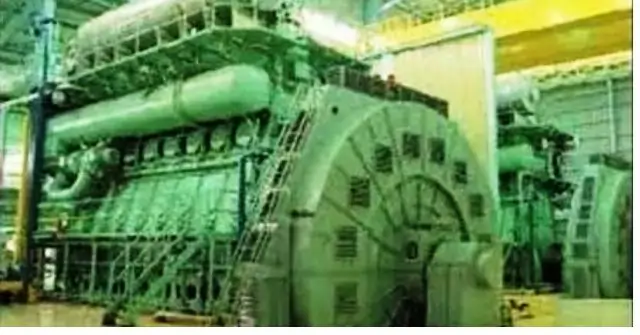


Now, let’s steer our ship towards MAN B&W, a heavyweight in the diesel engine game, hailing from the land of precision engineering, Germany.
MAN B&W KEF Series:
These engines have been cruising around for about two decades. They’re the workhorses of the sea, equipped with exhaust valves operated by push rods. And they have that pulse-type turbocharging system for that extra boost. But here’s the twist: no servomotor here. When it’s time to reverse, it’s all hands on deck, with good old mechanical means doing the job.
MAN B&W KGF Series:
Picture this as KEF’s sibling with a few upgrades. The KGF series is similar but has a nifty exhaust valve rotator with a roller bearing for smoother operation. Regarding reversing, they’ve got a cam held in a hub, which is key to the shaft. Turning the camshaft in one direction does the trick. And there’s no direct link between the chain drive and the engine camshaft.
MAN B&W MC Series:
These engines are the cool kids on the block. They’ve got an electronic control unit, making them super safe and efficient. VIT (Variable Injection Timing) is their secret sauce for fuel economy and power production. When it’s time to change course, they use air to reverse the engine, shifting the fuel pump cam follower from ahead to astern.
MAN B&W ME Series:
Say hello to the future with the ME series. It’s like the MC engine’s tech-savvy sibling. They’ve got electronic automation for safety and efficiency. These engines are all about optimal combustion, running clean and smokeless at all speeds. And if you’re into using liquid gas like LPG as fuel, they’ve got you covered with a nifty fluid gas injection system.
MAN B&W knows how to keep ship owners happy by offering a range of engines that cater to all needs while keeping an eye on the bottom line. These engines are the heartbeats of many vessels, ensuring smooth sailing and efficient voyages. ⚓🔧🛳️
Wartsila
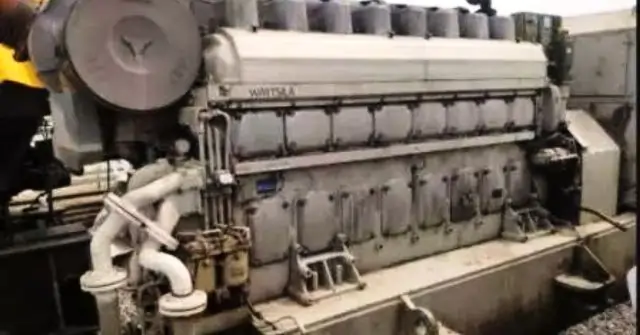


Hey there, let’s check out Wärtsilä and their cool engines. These folks are all about making engines that can do many things and work well.
Wärtsilä 46DF Dual Fuel Marine Engine:
Imagine an engine that’s like a shape-shifter. The Wärtsilä 46DF is a four-stroke dual-fuel wonder that can run on natural gas, heavy fuel oil (HFO), or marine diesel oil (MDO). No loss of power, no loss of speed. This engine results from Wärtsilä’s years of expertise, building on the success of their 46F and 50DF engine families. With over 800 machines in operation and a whopping 11 million running hours, you know you’re dealing with a pro.
Wärtsilä 34DF:
This one’s the Swiss Army knife of marine engines. The Wärtsilä 34DF is a medium-speed 4-stroke marvel that’s all about flexibility. It’s excellent for constant-speed generating sets and variable-speed mechanical drives. Plus, it packs a punch with high power output, which means you need fewer cylinders and more profit in your pocket.
Wärtsilä 14:
When it comes to compact power, the Wärtsilä 14 takes the crown. It’s like fitting a lion’s strength into a small package. This high-speed engine comes in 12 and 16-cylinder flavors, with power to spare. This series is the most suitable engine where space and power-to-weight ratio are greatly concerned. .. And the best part? It’s environmentally friendly, meeting IMO Tier III and EU Stage V standards.
Wärtsilä 20:
Meet the reliable workhorse of the bunch. The Wärtsilä 20 is a veteran in the game, with over 6000 engines delivered since the ’90s. It’s like your trusty old car that never lets you down. This engine can switch between MDO and HFO without skipping a beat, even under heavy load. And it meets the rules to keep the sea environment healthy. Wärtsilä is excellent at making engines that work well, save energy, and protect nature. These engines power many boats and help them run smoothly without harming the environment. . 🚢🔧🌊
Hyundai
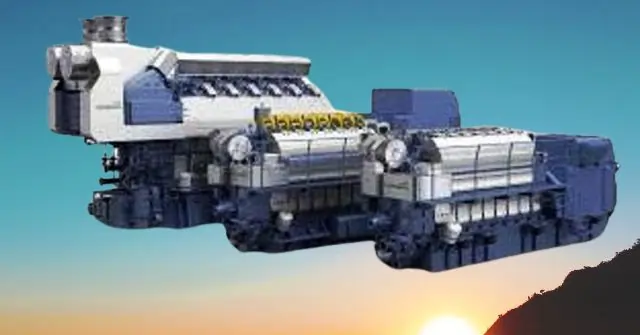


Let’s focus on Hyundai Heavy Industries, the big shots in shipbuilding and marine engines. These guys just hit the jackpot with some significant orders.
Hyundai Heavy Industries Scores Big:
Picture this: Hyundai Heavy Industries, the world’s largest shipbuilder and a top-notch marine engine maker, just landed impressive orders. They’re supplying their top-of-the-line HiMSEN marine engines to drillships for major offshore drilling companies like Noble Drilling Holding LLC., and Diamond Offshore Drilling Ltd. 98 HiMSEN engines are in the mix, valued at a cool $150 million. These engines are destined for 15 drillships, including nine ordered this year alone.
A Game Changer:
This is a game-changer for Hyundai Heavy. They used to import marine engines for their drillships, but now, shipowners love their HiMSEN engines. These engines are known for their top-notch quality. Plus, it’s speeding up the shipbuilding process, which is a win-win.
The Power Behind the Thrusters:
Now, let’s talk about what these engines do. Each drillship needs about six to eight marine engines to power the thrusters. Thrusters are like the engines of underwater vehicles, keeping the drillship steady while it’s doing its job.
Meet the HiMSEN Engines:
The HiMSEN engines are a special breed. They’re medium-speed, 4-stroke diesel engines that were born in 2000. These engines are not just powerful; they’re also eco-friendly. They’ve been shipped to Latin America, the Middle East, and Africa to help with power shortages. Remember the hurricane-hit Cuba in 2008 or earthquake-stricken Chile? These engines played a vital role in getting things back on track because of their mobility and easy installation.
Hyundai’s Impressive Track Record:
Since they rolled out their first HiMSEN engine in 2001, Hyundai Heavy has produced a whopping 5,000. That’s a massive chunk of the international medium-speed marine engine market, accounting for 35%. And it’s not just about brawn; these engines have won awards for their excellent design. They’re like the superheroes of the marine engine world.
So, there you have it: Hyundai Heavy Industries are making waves in the shipbuilding and marine engine game, one impressive HiMSEN engine at a time.
Who is the world’s largest marine engine manufacturer?
In the world of marine engines, one name truly shines Wärtsilä. They’ve accomplished something truly extraordinary by creating the biggest and most powerful diesel engine the world has ever seen. Imagine a colossal engine that it’s like trying to fit a whale into a fish tank!
With this massive engine, Wärtsilä has set a new benchmark for marine engineering. It’s not just massive; it’s incredibly powerful too. Picture this: it can generate enough electricity to power a small town! That’s how remarkable this engineering marvel is.
Subtitle 2: Pushing the Limits of Marine Technology
Wärtsilä didn’t stop at making a huge engine; they also pushed the limits of marine technology. They used this super-strong engine to move some of the world’s biggest ships, which helps make shipping goods around the world easier and better for the environment. Imagine a cargo ship as big as twelve football fields stacked on each other! Wärtsilä’s colossal engine not only moves it but does so while being eco-friendly. It’s like having a super-strong superhero who’s also an environmental champion!
Subtitle 3: A World-Changer in Marine Engineering
In the world of marine engines, Wärtsilä is a true game-changer. Their innovation is amazing and important for the future of shipping. Their gigantic engine made it much easier for ships to carry things and people across the oceans. This helps reduce pollution and makes shipping goods faster.
Imagine if we didn’t have such powerful engines – it would take a very long time to send things worldwide, and our planet would get even more polluted. Thanks to Wärtsilä, we have a huge and smart solution.
In conclusion, Wärtsilä isn’t just the biggest marine engine maker; they’ve also shown us what’s possible when smart people work with the vast sea. Their gigantic engine symbolizes progress and innovation, shaping the future of marine engineering for generations to come.
Who is the manufacturer of ship main engines?
Subtitle 1: Caterpillar Inc. – Powerhouse of Engines
Regarding ship main engines, Caterpillar Inc. is a true powerhouse. They’re known for crafting engines that are not only robust but also fuel-efficient. Picture a cargo ship with engines from Caterpillar; it’s like having a sturdy workhorse that sips fuel like a careful tea drinker.
Subtitle 2: Cummins Inc. – Engines with Reliability
Cummins Inc. is all about reliability. Their engines are like the dependable friend you can always count on. They’re trusted by many for their durability and performance, whether it’s on a fishing boat or a massive cruise ship.
Subtitle 3: Hyundai Heavy Industries Co., Ltd – Innovation in Motion
Hyundai Heavy Industries Co., Ltd is at the forefront of innovation. They’ve taken ship engines to the next level with their cutting-edge technology. Think of it as having a spaceship engine powering a ship here on Earth!
Subtitle 4: MAN Energy Solutions – Engines for the Future
MAN Energy Solutions is all about the future. Their engines are designed with sustainability in mind. It’s like having an engine that propels the ship and cares for our planet.
Subtitle 5: Mercury Marine – Precision on Water
Mercury Marine is known for precision. Their engines are like the precision instruments of the sea. They power boats with accuracy that would make a surgeon jealous.
Subtitle 6: Mitsubishi Heavy Industries Ltd – Engineering Excellence
Mitsubishi Heavy Industries Ltd brings engineering excellence to ship engines. Their engines are like works of art, combining power and craftsmanship. It’s like having a masterpiece under the ship’s hood.
Subtitle 7: Rolls Royce plc – Luxury of the Sea
Rolls Royce plc doesn’t just make cars; they also make luxury ship engines. These engines are like the Rolls Royce of the sea. They offer a premium experience in maritime travel.
Subtitle 8: Volvo Penta – Pioneering Marine Engines
Volvo Penta is a pioneer in marine engines. They’ve been at the forefront of innovation for years. Imagine having a powerful engine and a trailblazer in marine technology.
Subtitle 9: Yanmar Holdings Co., Ltd – Small Engine Giants
Yanmar Holdings Co., Ltd may be known for small engines, but take them seriously. Their compact machines are like hidden giants, delivering surprising power and efficiency.
In the world of ship main engines, these companies are the major players, each bringing unique strengths to the maritime industry. Whether it’s power, reliability, innovation, sustainability, precision, craftsmanship, luxury, pioneering spirit, or compact efficiency, they all shape the future of marine engineering.
Blog Conclusion
Well, sailor, we’ve ended our journey exploring the top marine engine manufacturers. We’ve seen remarkable powerhouses that keep our ships going smoothly, from the deep-blue oceans to the cutting-edge engine rooms. Let’s quickly review:
SULZER:
These veterans have been in the game for ages, with engines like the RD, RND, RTA, and RT Flex series. Each is like a chapter in the history of marine engines, from the old-school to the ultra-modern.
MAN B&W:
They’re all about versatility, offering engines like the KEF, KGF, MC, and ME series. It’s like having a toolbox full of options, each designed to cater to specific needs.
Wärtsilä:
These folks make waves with engines like the 46DF, 34DF, 14, and 20. It’s like they’ve got a solution for every ship’s engine needs, whether it’s power, efficiency, or environmental friendliness.
Hyundai Heavy Industries:
The big players in shipbuilding and engine-making have showcased their HiMSEN engines. It’s like a hit song on the radio – everyone wants to get their hands on these engines.
So, whether you’re sailing the high seas, crossing oceans, or drilling into the depths, these marine engines are the unsung heroes that keep our maritime adventures afloat. The ocean’s waves are similar to the sea’s heartbeat. They assist our boats in moving smoothly and reaching our destinations efficiently.
As we conclude, it’s important to remember that each boat manufacturer has a unique story to tell, and they all play a significant role in shaping the future of marine engineering.
Whether it’s for commerce, adventure, or exploration, these engines are the powerhouse behind our maritime dreams.
So, fair winds and following seas, my fellow sea lovers! Until next time, keep riding those waves and confidently exploring the vast oceans, knowing that the best marine engines are at your service. 🌊🚢🔧
FAQ on ” Top Marine Engine Manufacturers”
Q: What makes these manufacturers stand out in the industry?
A: These manufacturers are known for their reliable engines, innovative technology, and strong reputations in the marine industry
Q: Can you name a manufacturer known for high-performance marine engines?
A: Mercury Marine is renowned for its high-performance marine engines.
Q: Why are marine engines from these manufacturers important?
A: Marine engines from these manufacturers are crucial because they power boats and ships, ensuring safe and efficient journeys on the water.
Q: Who are the top marine engine manufacturers?
A: Some top marine engine manufacturers include Volvo Penta, Mercury Marine, Yamaha, and Cummins
